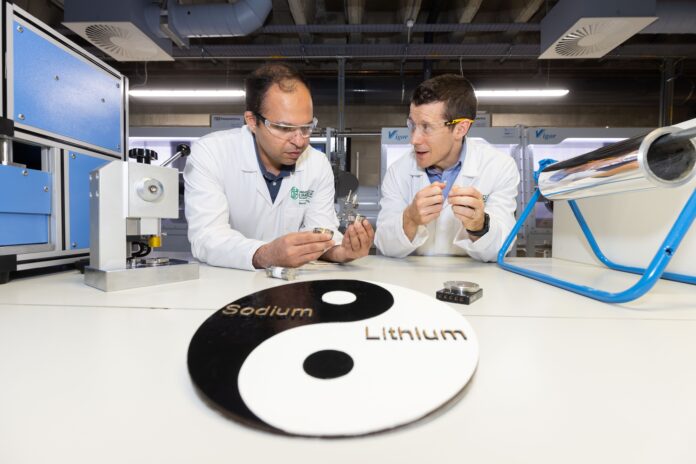
RESEARCHERS at the University of Limerick (UL) have a developed a battery that could reshape the future of electric vehicles and portable electronics.
The pioneering system could significantly enhance both battery capacity and stability, in the world’s first full-cell dual-cation battery.
The innovative system combines lithium and sodium ions to significantly enhance both battery capacity and stability, UL said.
The research, published in Nano Energy, was led by Hugh Geaney, associate professor in chemistry at UL’s Department of Chemical Sciences and principal investigator at UL’s Bernal Institute and Dr Syed Abdul Ahad. The project was a collaboration with researchers at University of Birmingham.
Unlike traditional sodium-only (single-cation) batteries, the new dual-cation system devised at UL combines the strengths of both lithium and sodium to deliver better performance while keeping sodium as the main component, making the technology more efficient and sustainable, according to UL.
“For the first time, we’ve shown that sodium-ion batteries can be ‘supercharged’ by pairing sodium and lithium in a sodium-dominant dual-cation electrolyte,” said Professor Geaney.
“This breakthrough opens the door to more sustainable, high-performance battery chemistries.”
Dr Abdul Ahad, who conceptualised the study and carried out the experimental work, explained that “by introducing both lithium and sodium cations, we actually double the battery’s capacity that would otherwise be lower in a typical sodium-ion battery. This has never been done before on the anode materials we used, which are projected to have high capacity for sodium-ion batteries.”
The battery’s design allows lithium to act as a “capacity booster” within the electrolyte, supercharging a sodium-ion system while maintaining long-term stability.
This approach improves energy density, critical for extending the range of electric vehicles and enhances safety and sustainability by reducing reliance on costly and environmentally challenging materials like cobalt.
Sodium-ion batteries have long been seen as a more sustainable alternative to lithium-ion batteries, which currently power most commercial appliances, however sodium-ion batteries do not have the same energy density as lithium-ion, resulting in a much poorer battery performance.


